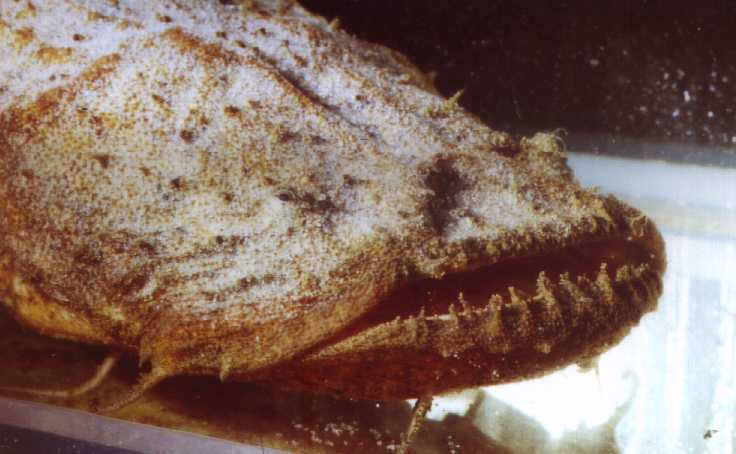9.2.
It has over-eaten!
The Chaca is swimming
around the tank (without taking cover in the ground as would be its usual daytime
behaviour), and showing occasional signs of retching.
His belly has taken the shape of an extremely large ball – it has quite obviously
over-eaten. I’m sitting by the tank anxiously – after all, two of my Mottled Whiptailed
Banjo catfish (Platystacus cotylephorus) died of over-eating.
However, two hours later it had calmed down and buried itself into the ground again.
It obviously eats if
it gets the chance to do so and then has digestive problems if it was too much and
the food bloats during the digestive process.
I read it here or there
before, but never believed it. Today I found out for myself:
The Chaca chaca
is said to be able to secrete certain substances that lower the pH level to a considerable
extent.
Today, after it had
been quite busy in the aquarium, I had a go at measuring – the pH level had dropped
from 7.0 to 5.5! Amazing.....how does it do it and why? I have another two equally
sized tanks with Farlowellas, Rineloricarias and Corydoras seussi connected to the
same water.
All the tanks
show pH 5.5, gH 11, kH 3 and nitrite=0, nitrate=10
Now, let’s consider
the following: on the one hand, this is an easy way of lowering the pH level without
having to use alder cones or peat or whatever – all I’d have to do is stock the
other tanks accordingly. On the other hand, it’s not a good idea to keep the Malawi
meals in its tank for longer periods of time.
What might this sudden
change of pH (no matter whether up or down) cause? For now, I changed the water
and am back at pH 7. None of the fishes shows any particular reaction.
How and why does a
predatory fish do this? Could it simply be an increased excretion of uric acid caused
by an intensified metabolism? But why is the nitrite level at zero then? What use
is it all to the Chaca, especially with respect to the fact that it doesn’t normally
live in pH 5.5 surroundings. Possibly acidifying the environment with a specific
effect on potential prey fish, an acidification which can only briefly be registered
in flowing waters?
What I need to measure
now is the period of time within which the Chaca managed to produce this acidification
– all the tanks connected to its circuit contain a total of 360 litres (gross).
11.2.
Two days later the pH level has already dropped to 6.5 from 7 – no further intake
of food on the side of the Chaca, it is still digesting.
18.2.
Today’s measuring results: kH 2, pH 5.5
Via the Internet I made contact with a Chaca owner who lives in New York and spends
a lot of his holidays in Bangladesh where his parents come from. That’s where he
hears some stories about the Chaca. They say that it is supposed to be able to secrete
poison, for example. He himself has been keeping a Chaca bakanensis for quite some
time now and is able to confirm the decrease in pH which he compensates for with
baking soda. His attention had been drawn to this particular ability of the Chaca
- which, to my knowledge, has been described nowhere else up to now - by the fact
that a feeder goldfish which had only just been put into the Chaca’s tank died within
seconds. He thereupon examined the water values.
The Chaca does not
produce any solid metabolic end products; it digests everything very thoroughly
and excretes fluids only, but what kind of fluids they are!
| 